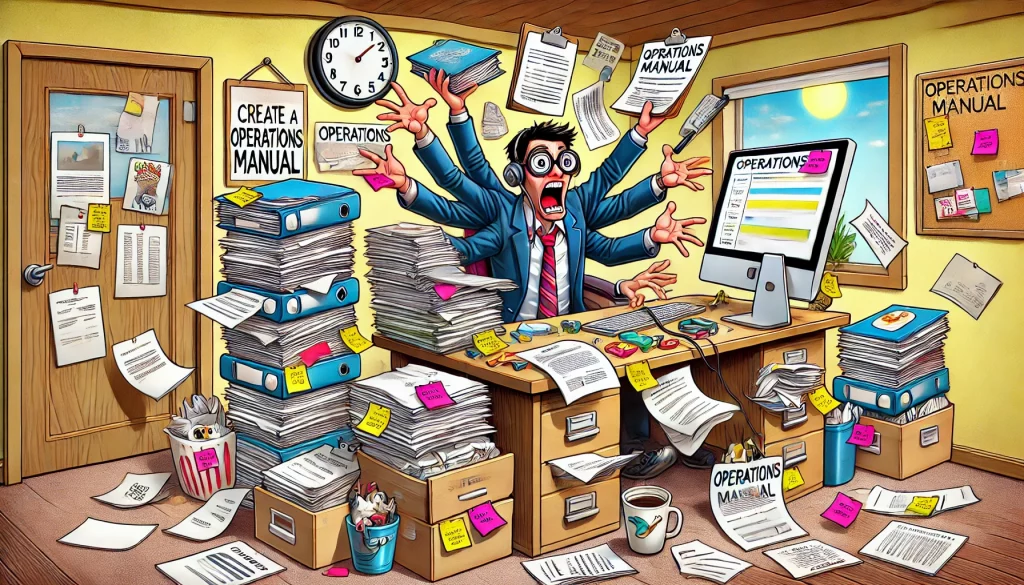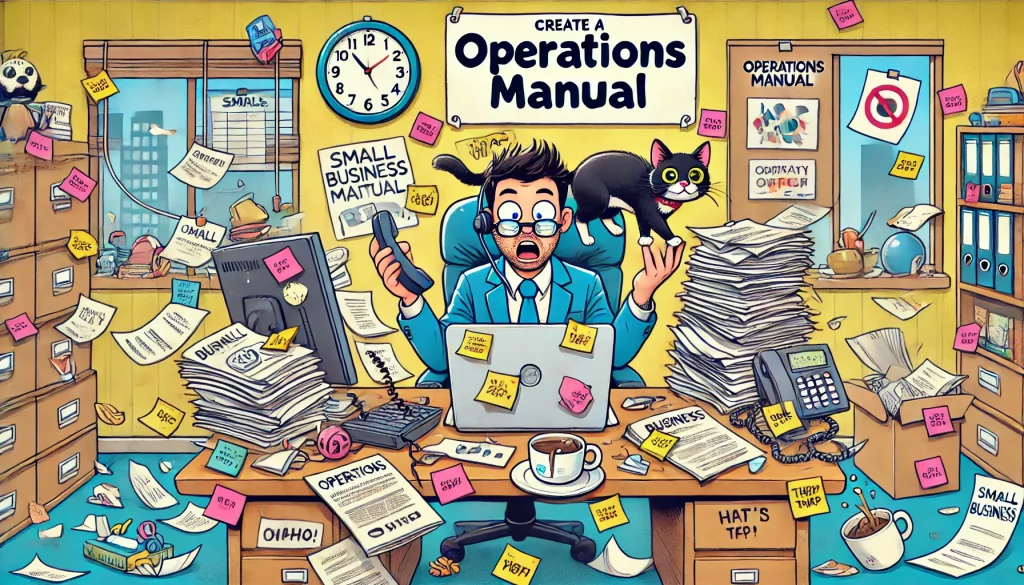How to create an operations manual for running a small business: Streamline your business operations

Crafting a robust operations manual for your small business
An operations manual is crucial for the efficient running of a business, detailing the necessary procedures, processes, and standards. It serves as a reliable guide for employees, ensuring consistency and quality in daily operations.
This is especially vital for small businesses, as it aids in task delegation, boosts efficiency, and maintains high service standards.
Getting started with your operations manual
Define the scope: Identify which business areas require comprehensive documentation.
Gather information: Compile all relevant documents, procedures, and insights from key staff members.
Choose a format: Opt for user-friendly digital tools like Microsoft Word, Excel, or Google Docs for easy updates and accessibility.
Best practices for documentation
Be thorough: Document every detail of each process.
Use clear language: Employ simple, straightforward language that avoids industry jargon.
Be consistent: Ensure uniform formatting and style throughout the manual.
Include visuals: Use diagrams, flowcharts, and screenshots to clarify complex procedures.
Maintenance and updates
The operations manual is a dynamic document that needs regular updates:
Schedule reviews: Set regular intervals (e.g., quarterly or annually) for reviewing and updating the manual.
Involve staff: Encourage employee feedback to refine and improve the documentation.
Track changes: Keep a record of all modifications to maintain a revision history.

Training and implementation
Effective implementation is crucial to the manual’s success:
Conduct training sessions: Organize workshops to familiarize employees with the manual.
Provide access: Ensure that all staff members can easily access the manual, whether digitally or in print.
Monitor compliance: Regularly verify that employees are following the outlined procedures and provide additional training as needed.
Tools and resources
Documentation software: Use tools like Microsoft Word, Google Docs, and Confluence for document creation and maintenance.
Project management software: Employ platforms like Trello and Asana for task management related to the manual’s creation.
Templates and guides: Utilize available templates to streamline the documentation process.
Measuring success
Employee compliance: Monitor the adherence to documented procedures.
Efficiency improvements: Assess any reduction in task completion time as a sign of increased efficiency.
Error rates: Track reductions in mistakes reported by customers and staff.

Common challenges and solutions
Resistance from staff: Increase buy-in by involving employees in the development process.
Keeping it current: Establish a regular update schedule and assign maintenance responsibilities.
Overwhelming information: Organize the manual into manageable sections and focus on essential processes.
Statistics and facts
Standardization and Improvement: Businesses with standardized processes witness a 21% improvement in consistency.
Efficient Onboarding: 67% of small businesses achieve faster onboarding with a detailed operations manual.
Increased Efficiency: Companies with documented procedures are 28% more efficient.
Regulatory Compliance: 45% of businesses find manuals helpful for meeting regulatory requirements.
Reduction in Errors: Operations manuals lead to 30% fewer errors.
Employee Confidence: 72% of employees feel more confident with clear guidelines.
Business Scaling: 50% of business owners view manuals as crucial for scaling operations.
Customer Satisfaction: Clear procedures boost customer satisfaction by 15%.
Enhanced Employee Performance: 60% of small businesses report improved performance with a manual.
Goal Achievement: Documented processes help 25% more businesses meet their goals.
Management Efficiency: 80% of small businesses say manuals reduce routine management queries.

Expert opinions on creating an operations manual
Jane Mitchell, Operations Consultant at BizPro Solutions “An operations manual is the backbone of any small business. It not only standardizes processes but also ensures that every team member is on the same page. This consistency is crucial for maintaining quality and improving efficiency. When employees know exactly what is expected of them and have clear guidelines to follow, it reduces the likelihood of errors and miscommunication. Moreover, having a well-documented manual helps in identifying and addressing any inefficiencies in the workflow, ultimately leading to smoother operations and better overall performance.”
John Carter, CEO of Carter Enterprises “Creating a comprehensive operations manual was a game-changer for our business. It reduced the onboarding time for new employees and significantly cut down on errors. Every small business should invest time in developing a detailed manual. When we implemented our operations manual, we saw immediate benefits in terms of productivity and employee satisfaction. New hires were able to get up to speed quickly, and existing employees had a reliable reference point for handling uncommon situations. This not only improved our day-to-day operations but also freed up management time, allowing us to focus on strategic growth initiatives.”
Linda Adams, HR Specialist at TalentBoost “From an HR perspective, an operations manual simplifies the training process. It provides new hires with clear guidelines and expectations, which helps them integrate smoothly into the company culture and start contributing quickly. The manual acts as a central repository of all the essential information employees need to perform their roles effectively. It covers everything from basic company policies to detailed procedures for specific tasks. This structured approach to training not only accelerates the learning curve but also ensures that all employees are aligned with the company’s standards and objectives.”

 5 min
5 min 







